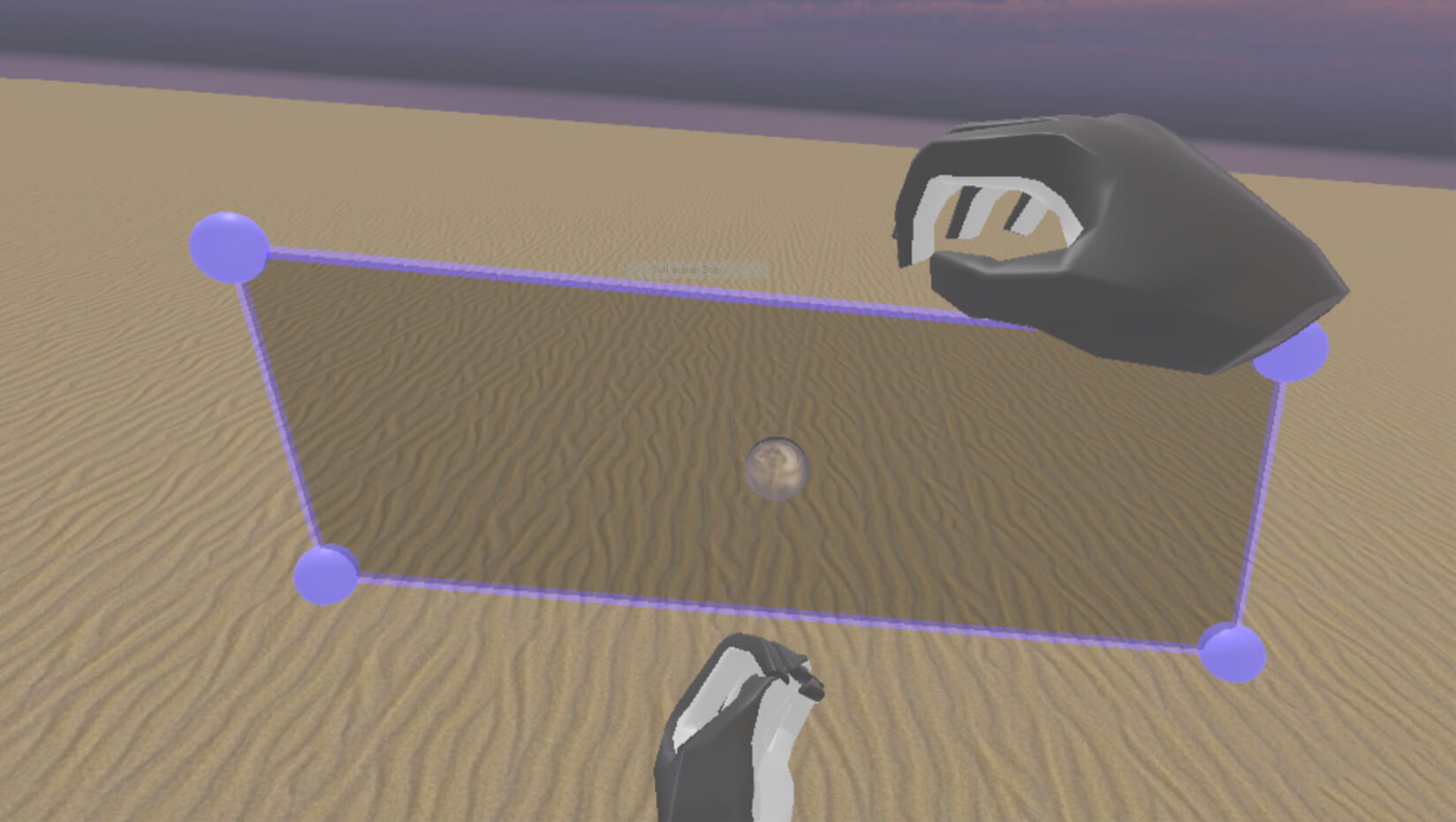
UMaine team develops virtual environment for learning mathematics
As virtual reality programs grow in popularity, more and more educators are using them to teach students about a variety of subjects, from science to geography to math. A team from the University of Maine recently released a beta version of one such program that allows students to learn geometry in a virtual 3-D space.
The program, called HandWaver, was designed and developed at UMaine’s Immersive Mathematics in Rendered Environments (IMRE) Laboratory and was supported in part by the UMaine Faculty Research Funds Program sponsored by the Office of the Vice President for Research.
Justin Dimmel, assistant professor of mathematics education and instructional technology with the College of Education and Human Development and IMRE’s director, says the program is designed for users of all ages.
“We wanted to harness the potential of commercially available virtual reality and gesture-tracking technologies to create an environment where anyone would be able to quickly and intuitively build and explore a range of geometric figures,” says Dimmel.
Dimmel adds that HandWaver was designed to be gesture-based to minimize the barriers between the intuitions people might have and the mathematical actions they might take to investigate those intuitions. He says it’s intended as a prototype of the kinds of learning experiences that will be increasingly available to schools as virtual reality technologies become more commonplace.
The program allows students to manipulate mathematical figures (i.e., shapes) in virtual reality, using simulations of their actual hands. For example, users can pinch and stretch objects, like points, to transform them into higher dimensional objects, like line segments. With repeated use of the stretching gesture, points can become line segments, which can become plane figures, which can become 3-D prisms. A separate set of gestures allows users to revolve shapes around axes to create new surfaces from the traces that figures make as they turn in space. The program also allows users to make shapes larger and smaller, or to modify the length of a line segment or the sides of an object to change its overall shape.
All that’s needed to use the program is a virtual reality headset. HandWaver is optimized for HTC Vive with a Leap Motion sensor affixed to the front of the display, but also supports other Open Source Virtual Reality gear and Oculus head-mounted displays.
The IMRE team, which includes a graduate research assistant, undergraduate developers, and a recent UMaine graduate, is continually updating HandWaver based on testing by users. Lead developer and research assistant Camden Bock is a doctoral student in STEM education at UMaine.
“The development of HandWaver has been an interdisciplinary collaboration, strengthened by the knowledge and intuitions of students from fields of education, mathematics and computer science as well as feedback from in-service teachers from across the state,” Bock says.
The program can be downloaded via a link at the IMRE website.
Last month, the IMRE team demonstrated HandWaver at a recent Virtual Reality Immersive Expo held by the Maine Department of Education at the state library in Augusta.
Contact: Justin Dimmel, 207.581.2422; justin.dimmel@maine.edu
